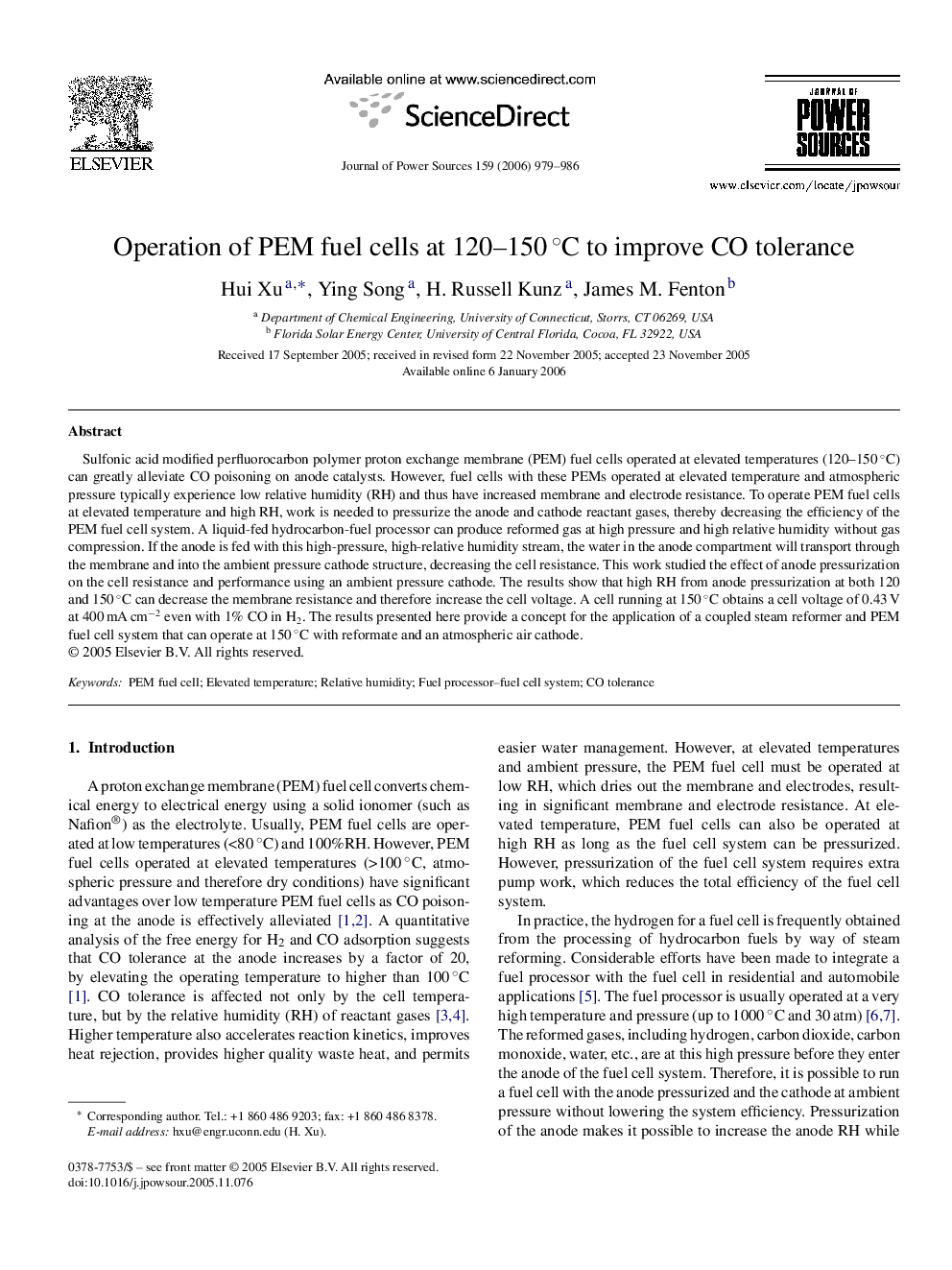| Article ID | Journal | Published Year | Pages | File Type |
|---|---|---|---|---|
| 1287250 | Journal of Power Sources | 2006 | 8 Pages |
Abstract
Sulfonic acid modified perfluorocarbon polymer proton exchange membrane (PEM) fuel cells operated at elevated temperatures (120-150 °C) can greatly alleviate CO poisoning on anode catalysts. However, fuel cells with these PEMs operated at elevated temperature and atmospheric pressure typically experience low relative humidity (RH) and thus have increased membrane and electrode resistance. To operate PEM fuel cells at elevated temperature and high RH, work is needed to pressurize the anode and cathode reactant gases, thereby decreasing the efficiency of the PEM fuel cell system. A liquid-fed hydrocarbon-fuel processor can produce reformed gas at high pressure and high relative humidity without gas compression. If the anode is fed with this high-pressure, high-relative humidity stream, the water in the anode compartment will transport through the membrane and into the ambient pressure cathode structure, decreasing the cell resistance. This work studied the effect of anode pressurization on the cell resistance and performance using an ambient pressure cathode. The results show that high RH from anode pressurization at both 120 and 150 °C can decrease the membrane resistance and therefore increase the cell voltage. A cell running at 150 °C obtains a cell voltage of 0.43 V at 400 mA cmâ2 even with 1% CO in H2. The results presented here provide a concept for the application of a coupled steam reformer and PEM fuel cell system that can operate at 150 °C with reformate and an atmospheric air cathode.
Related Topics
Physical Sciences and Engineering
Chemistry
Electrochemistry
Authors
Hui Xu, Ying Song, H. Russell Kunz, James M. Fenton,
